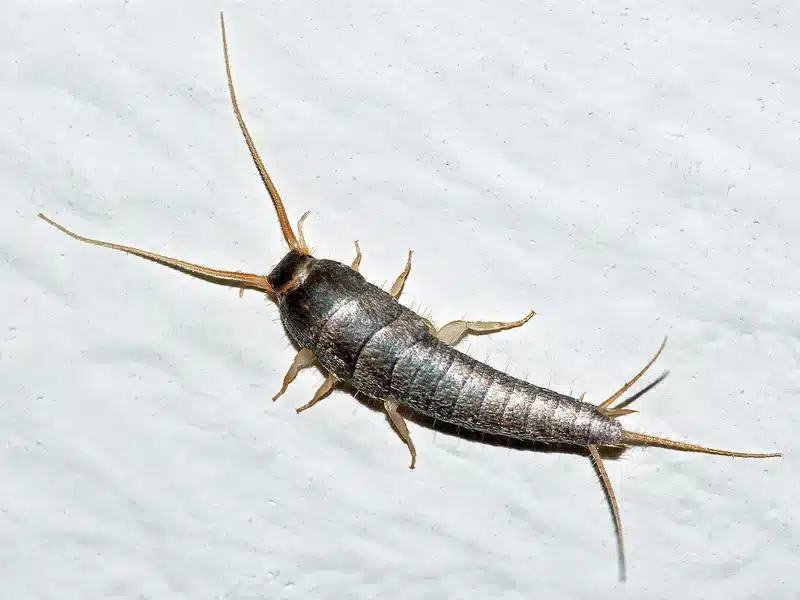Finding a quick-moving bug in your bathroom or basement can be startling. But knowing whether you’re dealing with a silverfish or centipede makes all the difference in how you handle the problem.
After four years as a registered technician and working with our family business that’s served the DMV area for over 50 years, I’ve seen both pests show up in the same damp spaces. However, these two creatures require completely different approaches to identify and control.
Understanding the silverfish vs centipede differences helps you make smart decisions about treatment. Let’s break down the 5 key ways to tell them apart.
What Makes House Centipede vs Silverfish Different
Silverfish belong to the order Zygentoma, making them true insects. They’re actually quite primitive, keeping traits from early insect evolution. Centipedes, on the other hand, fall under class Chilopoda and are myriapods - more closely related to millipedes than to any insect.
What does the science say?
According to the University of California Riverside, silverfish diverged early within hexapods and retain “primitive” traits, while centipedes share a distant common ancestor with insects. This evolutionary gap explains why these pests behave so differently.
The house centipede (Scutigera coleoptrata) is the main species you’ll find indoors throughout the Mid-Atlantic. Common silverfish species include Lepisma saccharinum and several Ctenolepisma varieties.
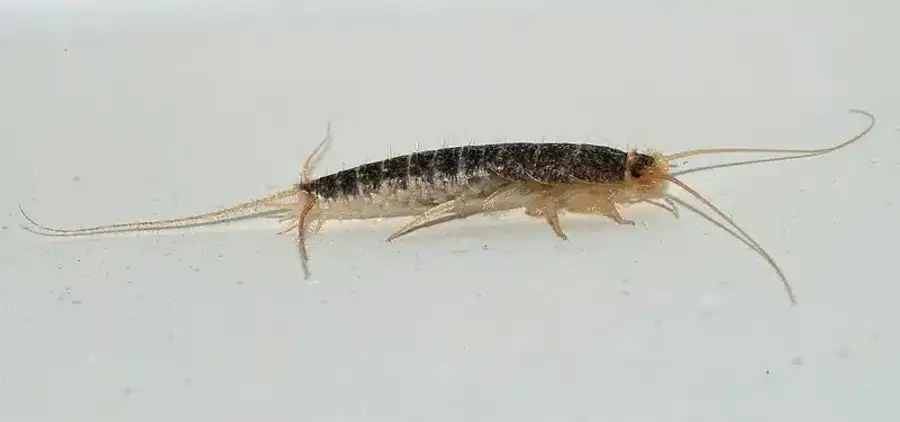
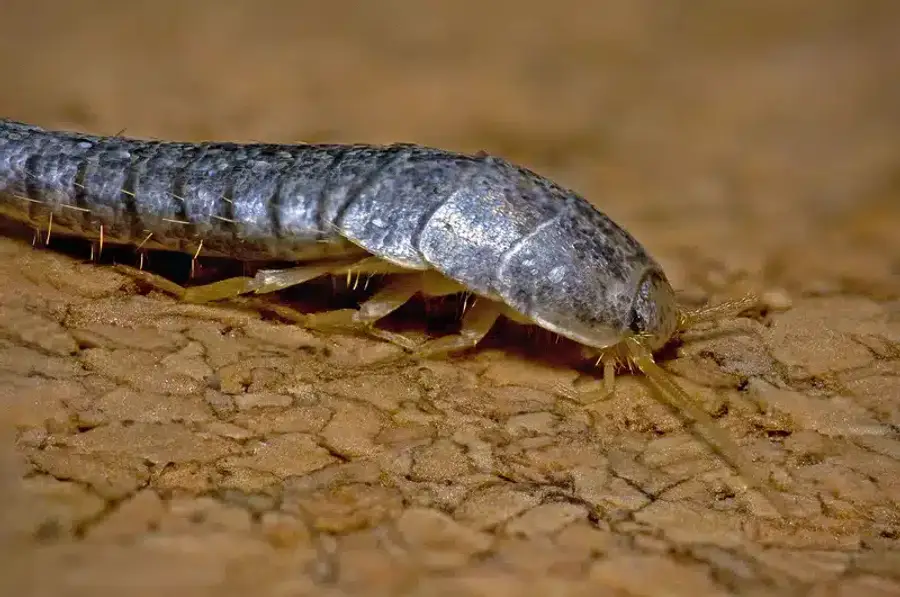
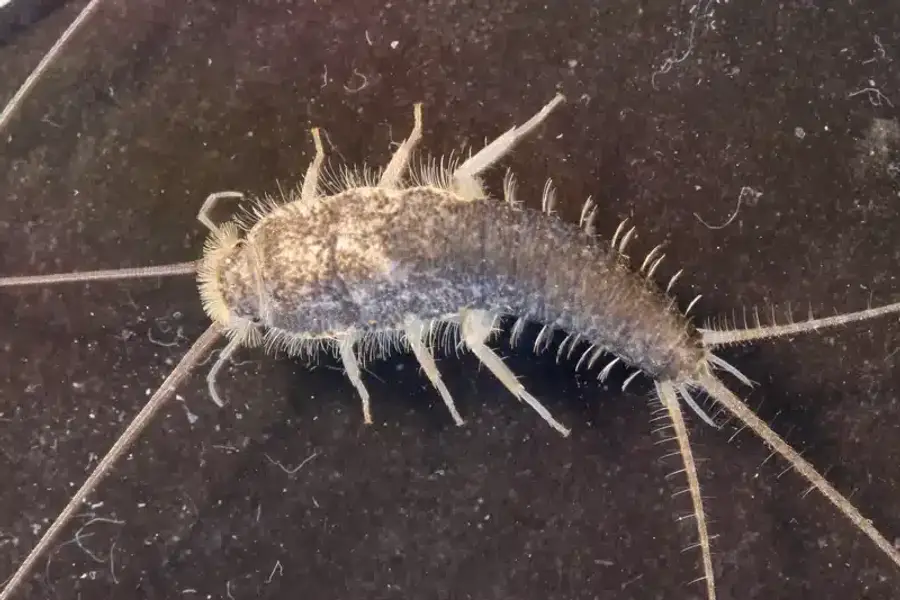
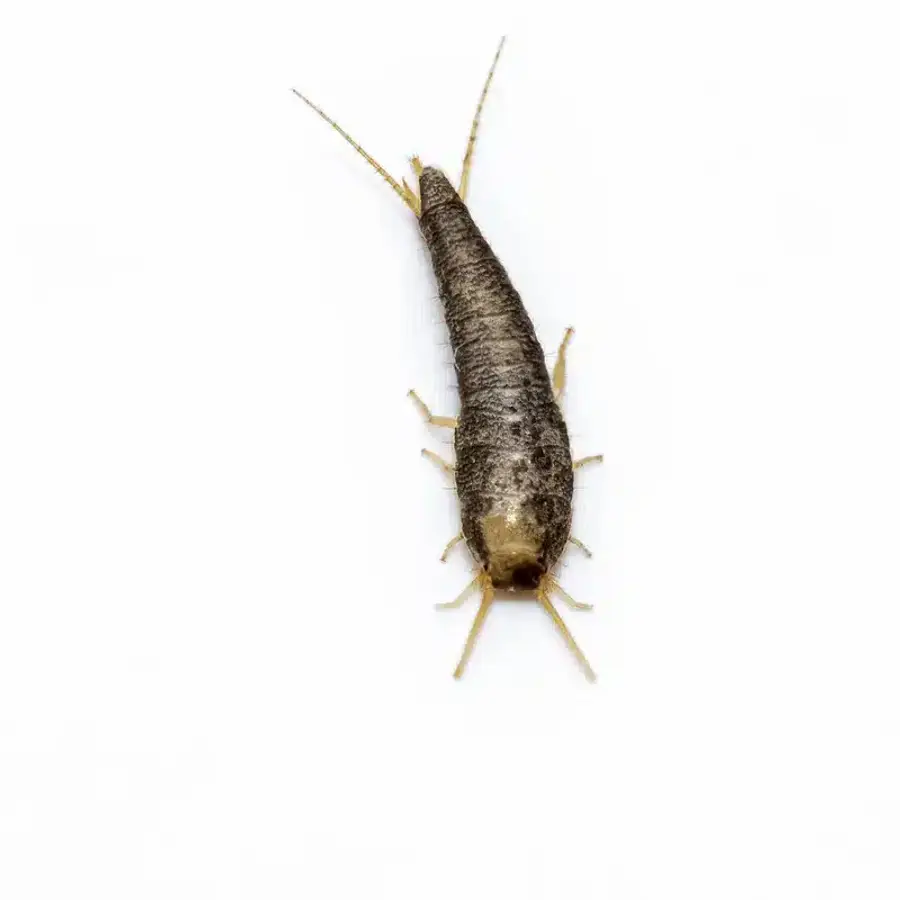
Additionally, this taxonomic difference impacts how we approach control methods. What works for insects doesn’t always work for myriapods. For more details on arthropod classification, check out our guide on Are Arachnids Insects? The Key Differences Explained.
Spotting the Physical Differences Between Centipede and Silverfish
The silverfish vs centipede appearance couldn’t be more different once you know what to look for.
Silverfish have a distinctive carrot-shaped body that’s flattened from top to bottom. They measure 8-19 mm long and are covered in silvery scales that give them their name. Most importantly, they have three tail-like appendages at their rear end - two cerci plus a median filament.
Centipedes are much larger, with bodies reaching 25-38 mm. But their legs make them appear 75-100 mm across. They have 15 body segments, each with a pair of long, banded legs. The last pair of legs on females can be twice the body length.
The head region shows stark differences too. Centipedes have large compound eyes and very long antennae. Their first pair of legs are modified into venomous claws called forcipules. Silverfish have tiny eyes (or none at all) and much shorter antennae.
For a detailed comparison with photos, visit our Centipede vs Silverfish: How to Tell Them Apart & Treat Them guide.
How They Move and Feed
Movement Patterns
Silverfish move with a distinctive wiggling motion that resembles a fish swimming. They’re fast runners but can’t jump or climb smooth surfaces well. That’s why homeowners often find them trapped in bathtubs or sinks.
Centipedes are among the fastest arthropods you’ll find indoors. They can sprint at speeds over 0.4 meters per second and make sudden directional changes. When threatened, they can shed legs to escape predators.
Diet and Feeding Habits
This is where the silverfish vs centipede difference becomes really important for homeowners.
Silverfish are omnivorous scavengers that love carbohydrate-rich materials. They’ll munch on:
- Starches and dextrins
- Book bindings and paper
- Wallpaper paste
- Rayon and linen fabrics
- Dead insects
What does the science say?
According to NC State Extension, they can survive months without food but need moisture to thrive.
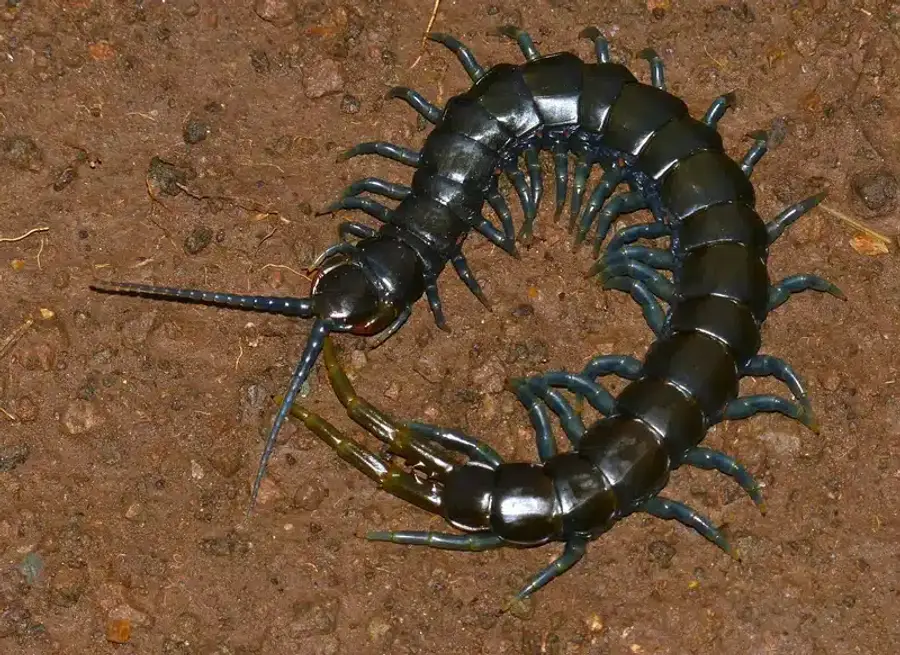
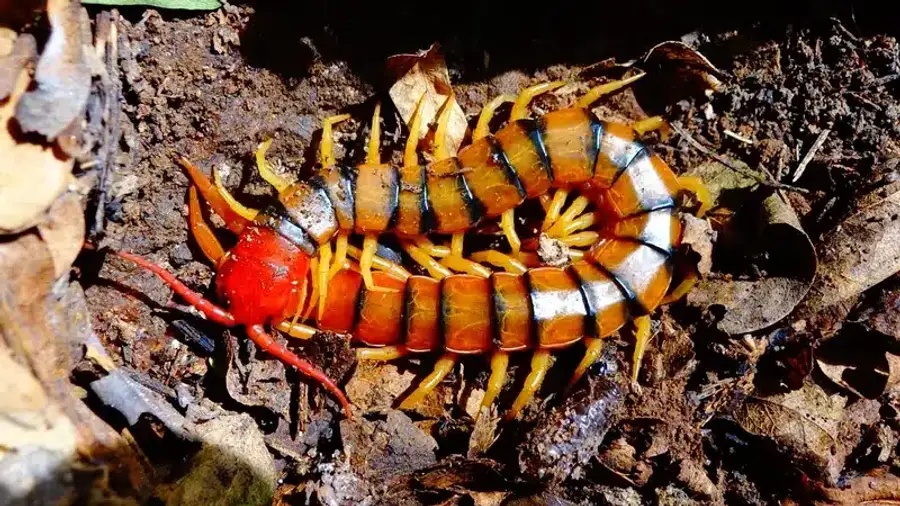

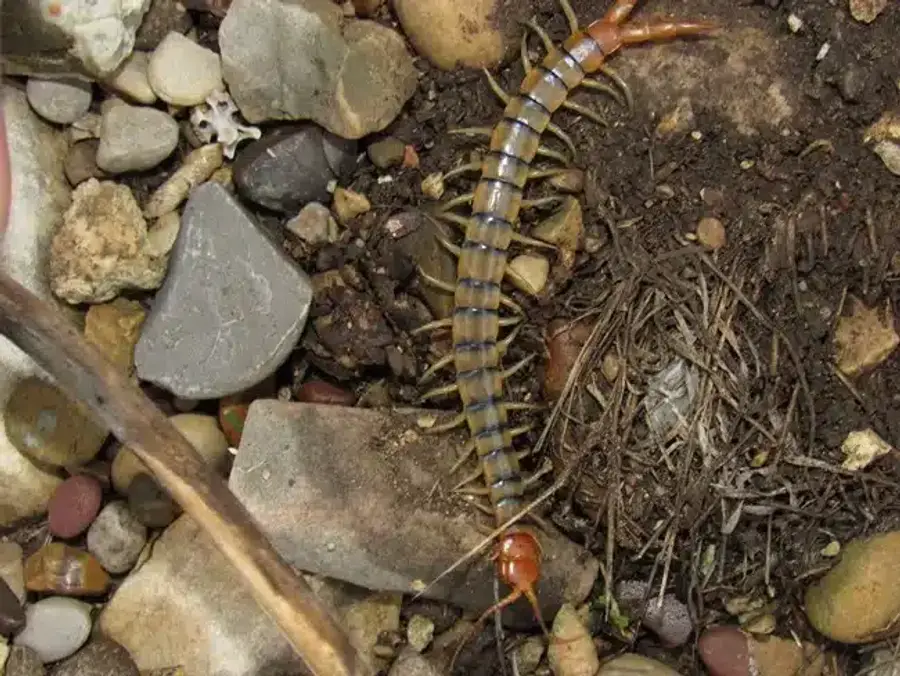
Centipedes are obligate predators that only eat live prey. They hunt:
- Cockroaches
- Spiders
- Bed bugs
- Flies
- Silverfish
- Ants
Important to Know
Centipedes use their venomous forcipules to paralyze prey and can actually subdue multiple insects at once. This makes them beneficial in most situations - they’re natural pest controllers that help keep other insect populations in check.
Learn more about what attracts these pests in our Silverfish Diet: What These Household Pests Actually Eat article.
Where You’ll Find House Centipedes and Silverfish
Both pests prefer damp environments, but their specific habitat needs differ significantly in the silverfish vs centipede comparison.
Silverfish thrive in consistently humid areas with 75-95% relative humidity. They prefer temperatures between 70-80°F and hide in:
- Bathroom cabinets
- Basement storage areas
- Wall voids near plumbing
- Attic insulation
- Boxes of papers or books
In humid areas like Silver Spring and Reston, these conditions exist year-round in many homes. The clay-heavy, moisture-retaining soil common in our area contributes to basement humidity problems.
Centipedes need moisture too, but they’re hunting for prey. You’ll find them in:
- Crawlspaces under slabs
- Floor drain areas
- Sump pump pits
- Block wall voids
- Areas where other insects congregate
They’re nocturnal hunters that hide during the day and come out at night to patrol for food. For comprehensive information about centipede behavior, visit our Centipedes resource page.
Life Cycles and Seasonal Activity
Understanding reproduction helps explain the silverfish vs centipede population patterns you might notice.
Silverfish reproduce slowly but live long. Females lay fewer than 100 eggs over their entire lifetime, placing them singly or in small groups. According to Virginia Tech Extension, eggs hatch in 2 weeks to 2 months depending on conditions.
What’s remarkable about silverfish is they never stop molting. They’ll molt over 50 times and continue molting even as adults. Their lifespan ranges from 2-8 years, which explains why infestations can persist.
Long-Term Pest Alert
Silverfish live 2-8 years and never stop molting, which means an infestation can persist and grow over time without proper treatment. Their long lifespan makes early intervention crucial.
Centipedes use indirect sperm transfer, with males leaving sperm packets for females to collect. Females average 63 eggs (ranging from 35-151) laid in moist soil cracks. Young centipedes hatch with just 4 legs and gain pairs through successive molts until reaching the adult 15 pairs.
Recognizing Infestation Signs
The silverfish vs centipede warning signals are quite different, helping you identify which pest you’re dealing with.
Silverfish leave behind clear evidence of their feeding:
- Notched or irregular holes in paper and fabric
- Yellowish stains on materials
- Pepper-like black feces
- Cast skins from molting
- Loosened wallpaper edges
You might also spot them directly since they often get trapped in smooth-sided sinks or bathtubs after falling in during nighttime foraging.
Centipede signs are more behavioral:
- Fast-moving, long-legged creatures on walls at night
- Shed legs (they drop them when escaping)
- Occasional exoskeletons near hiding spots
- Presence often indicates other pest problems (their prey)
What Centipedes Tell You
If you’re seeing centipedes regularly, it usually means they’re finding plenty to eat. This could signal underlying issues with other insects that need attention. Centipedes are hunters - their presence often indicates a larger pest problem.
For help identifying what’s causing pest problems, read our What Causes Silverfish? Tips to Get Rid of Bathroom Invaders guide.
Pest Control: Prevention Strategies for Silverfish and House Centipedes
Effective silverfish vs centipede control requires different approaches because of their distinct biology and behavior.
Silverfish prevention focuses on moisture control:
- Run dehumidifiers to keep humidity below 50%
- Fix leaks and improve ventilation
- Store papers and fabrics in sealed plastic containers
- Vacuum cracks and crevices regularly
- Seal gaps around plumbing
Centipede prevention targets both moisture and prey elimination:
- Address underlying insect problems
- Seal cracks in foundation slabs and block walls
- Screen floor drains
- Remove cardboard storage from concrete floors
- Reduce clutter in basements and crawlspaces
At Better Termite & Pest Control, we use The Better Method for comprehensive pest management. It starts with an expert phone consultation where our licensed technicians assess your specific situation. Then we perform our detailed 78-point home inspection to identify both active problems and potential trouble spots.
Professional Treatment Options
When prevention isn’t enough, professional treatments become necessary for stubborn silverfish vs centipede problems.
Silverfish treatments typically involve:
- Residual pyrethroid applications in hiding spots
- Boric acid dust in wall voids
- Diatomaceous earth around harborage areas
- Targeted applications where feeding damage occurs
Centipede treatments focus on:
- Dust applications (boric acid or diatomaceous earth) in voids
- Targeted pyrethroid spot treatments in harborages
- Perimeter treatments to exclude prey insects
- Moisture reduction recommendations
Our research team has removed 9 harsh chemicals commonly used in the industry. Instead, we rely on products like Essentria, Sentricon, and borate-based solutions. All products we use are EPA approved and have passed through our internal research team - each one is something we’d feel comfortable using in our own homes.
According to Penn State Extension, centipede control can be challenging because of their elevated body stance, making thorough application crucial.
Quick Reference: Key Differences
At-a-Glance Comparison
Here’s a summary of the major silverfish vs centipede distinctions:
- Classification: Insect vs Myriapod
- Legs: 6 vs 30+
- Body shape: Carrot-shaped vs segmented with long legs
- Appendages: Three tail filaments vs venomous claws
- Diet: Starchy materials vs live prey
- Health risk: Property damage vs mild venom potential
- Environmental benefit: None vs beneficial predator
- Habitat: Humidity-dependent vs prey-dependent
Common Myths About These Pests
Let’s clear up some misconceptions about the silverfish vs centipede debate.
Myth: “Silverfish only live in dirty homes.”
Reality: Moisture drives silverfish infestations, not sanitation. In fact, newer tightly sealed homes with humidifiers often support larger populations because they maintain consistent humidity.
Myth: “House centipedes lay eggs in beds or human ears.”
Reality: Centipedes avoid humans completely and lay eggs in soil cracks away from living spaces. This myth likely comes from confusion with other arthropods.
Myth: “Both pests carry diseases.”
Reality: Neither silverfish nor centipedes transmit diseases to humans. Silverfish cause property damage, while centipedes actually help by controlling other pests.
Taking Control of Your Pest Problem
Understanding the silverfish vs centipede differences empowers you to make informed decisions about treatment. Whether you’re dealing with silverfish damaging your belongings or centipedes hunting through your basement, the right approach depends on accurate identification.
Remember that centipedes often indicate other pest problems since they’re hunting for food. Addressing the root cause - whether it’s moisture for silverfish or prey insects for centipedes - provides the most effective long-term control.
Frequently Asked Questions
Can silverfish bite or harm humans?
+
Silverfish cannot bite humans. They lack the mouthparts necessary to break human skin. These insects only feed on starchy materials like paper, glue, and textiles. The main concern with silverfish is property damage - they'll chew through book bindings, wallpaper, and fabrics, leaving behind notched edges and yellowish stains.
Are house centipedes venomous or dangerous?
+
House centipedes do have venom, but they're not dangerous to humans. According to [Clemson University](https://hgic.clemson.edu/factsheet/centipedes/), their bite feels similar to a bee sting with localized pain and swelling. Serious reactions are extremely rare and usually only occur in people with specific allergies. Most centipedes avoid human contact entirely.
How can I tell if I have silverfish or centipedes?
+
The easiest way to distinguish silverfish vs centipede is by counting legs and observing movement. Silverfish have 6 legs and move with a fish-like wiggle, while centipedes have 30+ very long legs and run in quick bursts. Silverfish are silver-colored with three tail appendages, whereas centipedes are brown with banded legs and forcipule claws near their head.
Do silverfish and centipedes infest the same areas?
+
Both prefer dark, damp locations like basements and bathrooms, but for different reasons. Silverfish need consistent humidity to survive and hide in storage areas, wall voids, and anywhere paper or fabric is stored. Centipedes hunt in areas where their prey congregates - near floor drains, under slabs, and in spaces where other insects hide.
What's the fastest way to get rid of silverfish vs centipedes?
+
For silverfish, reduce indoor humidity below 50% using dehumidifiers and fix any moisture sources. Store susceptible materials in sealed containers. For centipedes, eliminate their food sources by addressing other insect problems and seal entry points. Both require different treatment approaches, so calling a licensed technician ensures you get the right solution for your specific pest.
Do silverfish damage your home?
+
Yes, silverfish cause property damage by feeding on household materials. They chew irregular holes in paper, books, and documents. They'll also damage wallpaper by eating the paste, cause fabric damage to natural fibers like cotton and linen, and leave behind scales and dark fecal stains. The damage accumulates over time since they live 2-8 years.
When are silverfish vs centipedes most active?
+
Both are nocturnal, but their seasonal patterns differ. Silverfish remain active year-round indoors wherever humidity stays high - they don't have a specific season. Centipedes peak from May through September in the Mid-Atlantic region when prey insects are most abundant. During winter, centipenes can only survive in heated buildings since they can't overwinter outdoors in our climate. Have questions about identifying or controlling pests in your home? Call us at 703-683-2000 or email info@bettertermite.com for expert advice from our licensed technicians.
With five years of hands-on experience in the pest control industry, George Schulz is a registered technician with the Virginia Pest Management Association and a proud third-generation professional in a family business that's been protecting homes for over 57 years. He manages and trains a team of service pros while also leading internal research efforts—recently spearheading a deep-dive review of thousands of documents on pest control materials to hand-pick the most kid and pet friendly, most effective solutions tailored specifically for homes in the DC metro area.
